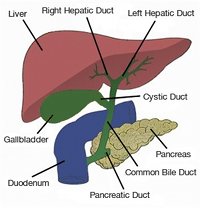Removing Gallstones By Surgery
 Last week, our youngest son who is not so young at thirty (30) years old underwent cholecystectomy (surgical removal of the gallbladder). He felt signs of the trouble since December 2012 when he experienced durations of mild to extreme stomach pains until August of this year when we had to rush him to a nearby hospital because he can no longer endure the pain.
Last week, our youngest son who is not so young at thirty (30) years old underwent cholecystectomy (surgical removal of the gallbladder). He felt signs of the trouble since December 2012 when he experienced durations of mild to extreme stomach pains until August of this year when we had to rush him to a nearby hospital because he can no longer endure the pain.
He was administered different kinds of pain relievers to no avail until the pain subsided only after he was injected with Nubain, a kind of drug used as sort of last resort to kill pain in my own observation. When the pain was gone, he was allowed to go home with the advice for an ultrasound examination.
The day after he was rushed to the hospital but not confined, he had an ultrasound examination and was found to have two (2) gallstones measuring 1.3mm and 1.4mm according to the doctor’s report of findings. He immediately consulted an internal medicine doctor who did not give him any medicine but advised him that he will have to undergo surgery for gallbladder removal if the pain subsists. Taking note of the small sizes of the gallstones in the ultrasound report, we thought he will be fine in the meantime as we look for ways to get rid of the gallstones without surgery.
 In our efforts to find ways to remove gallstones the natural way, we came across a lot of suggestions in the Internet but our son would not want to take chance with any of them due to risk of getting the gallstones stuck in the common bile duct after they are expelled from the gallbladder (refer to the image for better appreciation of his worry). When his worry happens, it would be more difficult and costly to remove the gallstones stuck in the common bile duct.
In our efforts to find ways to remove gallstones the natural way, we came across a lot of suggestions in the Internet but our son would not want to take chance with any of them due to risk of getting the gallstones stuck in the common bile duct after they are expelled from the gallbladder (refer to the image for better appreciation of his worry). When his worry happens, it would be more difficult and costly to remove the gallstones stuck in the common bile duct.
I took pictures of the gallstones that our son had in his gallbladder and posted one of them above. Take note of the 3/4-inch size of the gallstones is thirteen times (1.3 -1.4mm versus 0.75 inch or 19mm) the ones indicated in the ultrasound examination report which was done just two (2) months before his operation. I brought up this big discrepancy with his surgeon when he showed them to me right after the surgery and he could not explain the size difference in the ultrasound report and the actual.
Could this be an obvious error due to ignorance of the doctor who did the ultrasound examination? Or is it a standard practice in the medical procession to use a unit of measure known only to themselves so that they won’t unduly alarm a layman who will read their reports?




could the difference in size be attributed to the 2 month period when the ultrasound was done and the date of actual operation? well, a specialist on this field should be consulted if it is possible that in two months time, it can grow 13 times bigger.